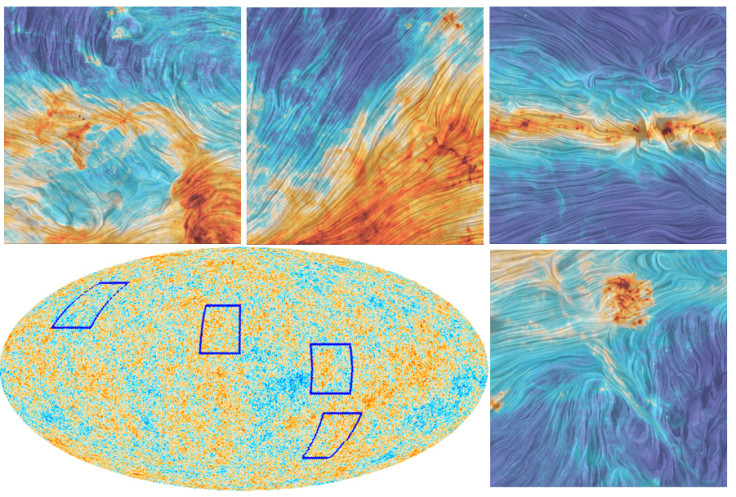ESA's Planck satellite throws new insights into nature of elusive dark matter and neutrinos

Neutrinos released a second after the Big Bang have been detected by ESA's Planck satellite, thanks to their interaction with the relic radiation 380,000 years after the cosmic birth event.
By studying the relic radiation, the Planck data excludes the existence of a fourth neutrino type, and places an upper limit to the mass of neutrinos.
The data also confers stability to dark matter property and does away with a need to rely on dark matter-antimatter annihilation to explain the early universe.
The Planck collaboration, which includes the CNRS, CEA, CNES and several French universities, disclosed the observations at a conference in Ferrara, Italy.
Observations by the Planck satellite between 2009 and 2013 that focused on the cosmic microwave background (CMB) radiation, or relic radiation, show clear imprints of elusive dark matter and relic neutrinos.
The map showing variations in light intensity of the relic radiation indicates the position of matter in space some 380,000 years after the Big Bang.
The satellite looked at the intensity and polarisation of the relic radiation to produce the oldest image of the Universe.
Dark matter theories
Present theories on dark matter that rely on dark matter-antimatter annihilation assume that a particle and its antiparticle jointly disappear, releasing sufficient energy to influence evolution of the light-matter in the early universe.
However, the most recent observations show no hints that this actually took place.
The excess of cosmic rays observed by satellites Fermi and Pamela, as well as the AMS-02 experiment aboard the International Space Station, have been interpreted as a consequence of dark matter annihilation.
But the Planck observations suggest that there must be another explanation for those.
The Planck collaboration has confirmed that dark matter comprises a bit more than 26% of the Universe today and has made more accurate maps of the density of matter a few billion years after the Big Bang, thanks to its measurements of temperature and light polarisation.
Primoridal neutrinos
Planck was also able to detect the elusive neutrinos, which being uncharged, are normally difficult to detect. More so, the primordial neutrinos with very little energy.
However, as the neutrinos interacted via gravity with the relic radiation, they left their imprint which Planck duly picked.
Planck observations exclude the existence of a fourth species of neutrinos, previously considered a possibility based on the final data from the WMAP satellite.
It also sets an upper limit to the sum of the mass of neutrinos, currently established at 0.23 eV (electron-volt).
© Copyright IBTimes 2025. All rights reserved.





















